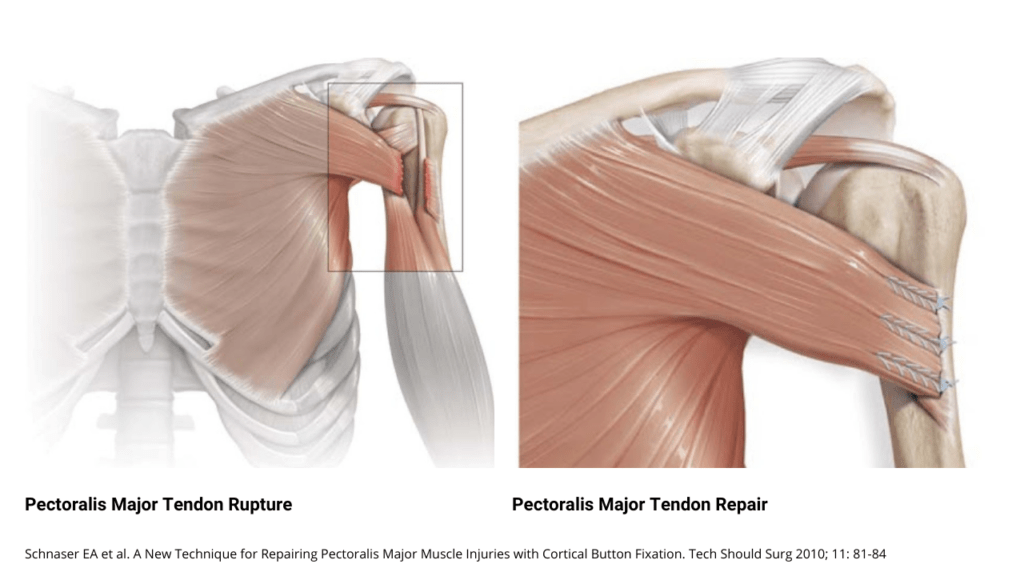What is it?
The pectoralis major is a chest wall muscle that is responsible for allowing the arm to rotate inward and push forward. It originates from two areas: the sternum (breast plate) and the clavicle (collarbone). These two muscles insert onto the humerus (arm), close to the biceps tendon. Pectoralis major ruptures are rare injuries and generally occur with bench pressing or in contact sports, such as football.
WHAT ARE SIGNS AND SYMPTOMS OF PECTORALIS MAJOR TENDON RUPTURES?
Common symptoms of pectoralis major tendon ruptures include:
• Sudden pop in the chest
• Deformity of the chest muscle
• Bruising along the chest and arm
• Weakness with bench pressing
Diagnosis
In the office, a complete history and physical exam is obtained. The chest wall and arm are examined for any deformity and tenderness to palpation. Careful measurements, including range of motion and strength of the arm, are recorded. Oftentimes, advanced imaging studies, such as a MRI, are obtained to confirm the diagnosis.
Treatment
Conservative treatment of pectoralis major tendons is recommended in partial tendon tears, muscle belly tears, or in elderly patients. Such treatments include rest, ice, anti-inflammatories, and physical therapy.
In athletes with complete ruptures who wish to regain their strength and return to their sport, operative treatment of pectoralis major is recommended. Surgical repair involves reattaching the tendon to the bone using either suture anchors or titanium buttons. This is typically done in an outpatient setting, allowing patients to return home the same day. Studies have demonstrated improved strength and function following surgical repair as compared with nonoperative treatment. In conjunction with supervised physical therapy, surgery has been shown to successfully repair the pectoralis major tendon, eliminate the deformity, improve strength, and allow patients to return to their sport.

RECOVERY
Following surgery, patients are immobilized in a sling for six weeks (including sleep for four weeks). Physical therapy begins around 3-4 weeks after surgery. Range of motion is then initiated at six weeks, followed by strengthening at 12 weeks. Patients generally return to activities at about 5-6 months postoperatively.
